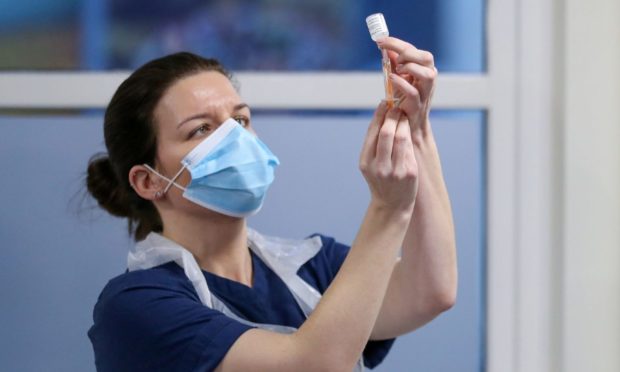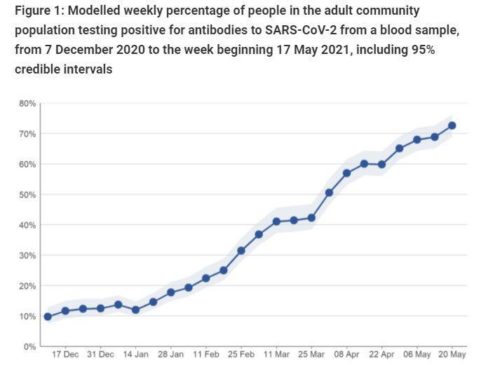A survey from the Office for National Statistics (ONS) has found that around seven in 10 adults in Scotland have coronavirus antibodies – significantly less than the other parts of the UK.
The success of the vaccination programme across the country has vastly increased the number of people who have developed antibodies to fight the virus, with data showing a clear pattern between the roll-out and the rise in the presence of antibodies.
Before vaccines began to be given out, they would only be present in the body of somebody who had been infected with the coronavirus.
The ONS estimates that 72.6% of the Scottish adult population would have tested positive for antibodies against SARS-CoV-2 (the virus that causes Covid-19) in the week beginning May 17.
For Northern Ireland, that figure was 79.9%, while England was at 80.3% and Wales was at 82.7%.
Because the estimates are based on a sample of people within the population, the report includes a “credible interval” to show the range of uncertainty around a figure.
For Scotland, this shows there is a 95% probability that the the true amount of adults in Scotland with antibodies lies between 68.9% and 76.3%.
Unsurprisingly, with the vaccine roll-out largely prioritising people based on how old they are, there was a large disparity in the number of people with antibodies between age groups.
The modelled percentage of Scots aged 65 or over who have antibodies ranged from 94% to 97%; aged between 50 and 64 years old ranged from 87.1% to 87.2%; and aged between 16 and 49 years old ranged from 37.7% to 68.5%.
What are antibodies?
Antibodies are a type of protein that track down foreign invaders in the body, such as viruses, parasites or bacteria, then attach to them to help the immune system in its fight.
The presence of SARS-CoV-2 antibodies can show whether somebody has had the infection or has been vaccinated.
The length of time coronavirus antibodies remain in the body is not fully known at the moment.
The amount of antibodies needed to give protection is also not known, and a person’s immune response does not rely on antibodies alone – someone with a level of antibodies that is not high enough to identify as positive in the test may still have protection against the virus.

